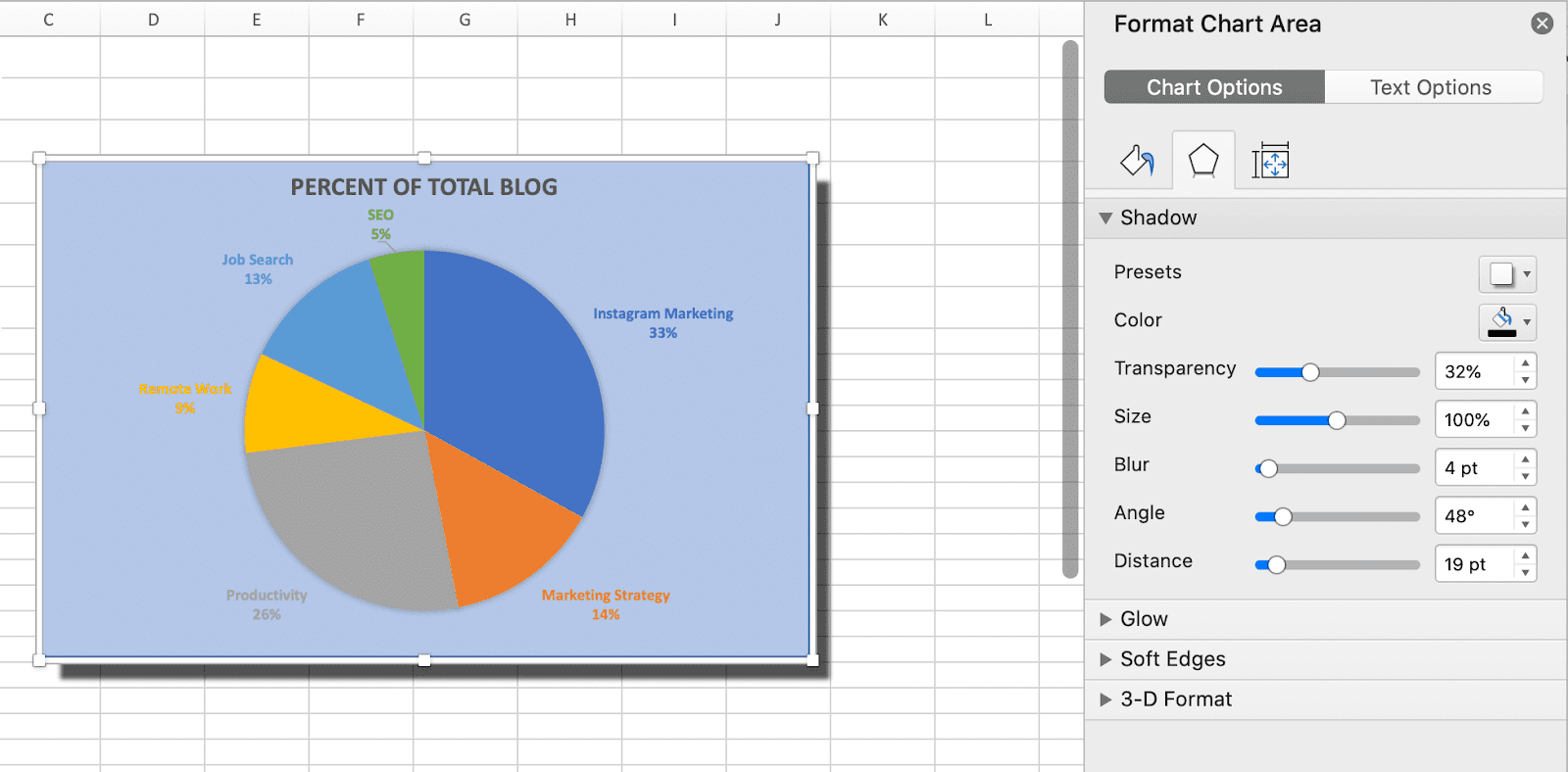

This goes for all Excel charts, by the way, not just pie charts.Įnough small talk. These are called contextual tabs, meaning that they only appear when you select a chart. Most of the menu options we’ll be referring to below can be found on the Design or Format tabs. After all, even if the slices are not labeled with individual values or percentages, and if there is no legend (doesn’t sound like a very good chart, to be honest), the relative size of each slice is a visual indicator of the value of each variable in relation to the other variables, and to the pie as a whole. Pie charts are notoriously bad for displaying lots of data points, simply because the slices will be too small, making them meaningless for making a point visually.Īs long as you remember that the data in a pie chart will always add up to 100%, you can appreciate why it’s so easy to read. Negative values will be displayed as positive values, as zeros won’t be displayed at all.

you want to display a trend over time.you want to display more than one data series (i.e., each category has multiple data points).Let’s get this out of the way - pie charts are not ideal for every type of data. It’s easy to create and even easier to read. It usually doesn’t require the audience to have an in-depth knowledge of the subject being reported on, nor any lengthy explanations of what it is meant to describe. All the labels will be adjusted with the appropriate numbers.A pie chart is very useful for displaying basic statistical data. So to add percentage labels, you could write something like 5% or 6.00%. It doesn’t matter which specific numbers you use in the input box, it’s only the format that matters. Then enter an example number in the format that you’d like your labels to have. In the formatting toolbar, click on the white input box. To change your labels to percentage labels, select or multi-select the labels that you want to adjust, and then a formatting toolbar will appear. Next, you need to change the number format of your labels. In other words, plain numbers with no decimal places. In most cases, you will need to add one of the following label types, depending on the chart type that you are using:īy default, your labels will be formatted as integers. To add labels to your think-cell chart, right-click on the chart and then select the label type you’d like to add. Add labels to your chartįirst, you need to add labels to your chart. Don’t have the Think-Cell PowerPoint add-on? Read our review to learn more or get a free trial from and test it out! Step 1.


 0 kommentar(er)
0 kommentar(er)
